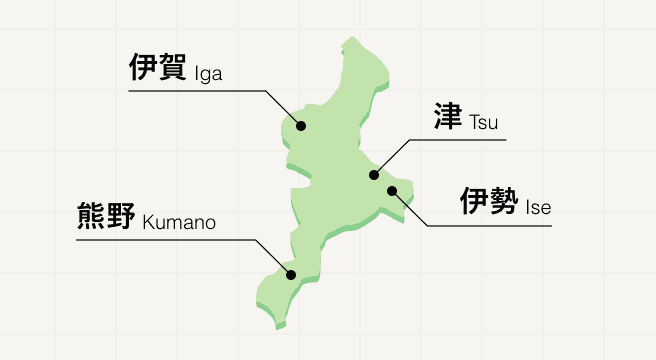Historical Monument Spots in Matsusaka / Tsu Area
Area
-
-
Mie
-
-
Mie
-
-
Matsusaka / Tsu
-
Matsusaka / Tsu

Category


-
- Gojoban Yashiki
-
4.0101 Reviews
- Travel / Tourism
- Mie Pref. Matsusakashi Tonomachi 1385
- Gojoban Yashiki is a samurai residence in which the 20 Kishu top-ranking samurai who guarded Matsusaka Castle at the end of the Edo period lived along with their families. An unusual kumiyashiki (residence for low class samurai enrolled in one of the police forces) even across all of Japan, it still remains inhabited by the samurai descendants, and only one part of the residence on the north side of the west building is open to the public. It is located approximately 15 minutes on foot from JR Matsusaka Station.
-
A short street with some historical house. Worth to stop by if u stay in the city and you love Japanese stuff. Also, no good for parking
-
- Former Hasegawa Residence
- Travel / Tourism
- Mie Matsusaka-shi Uomachi 1653
- "This residence of the Jirobe Hasegawa, one of the most successful merchants of Matsusaka, is located along Uomachi-dori Street, which stretches along the city with a subdued atmosphere, about a 15-minute walk from Matsusaka Station. As for the facade appearance, it is a ""Tsushi two-story building"" where the second story has a low ceiling, and the exquisite main udatsu (a fire-preventative structural element used in residential houses) above the sleeve (side) walls. As a collection of buildings featuring a vast manor and many manor properties, it was registered as a National Important Cultural Property in 2016. A vast collection of materials, such as merchant materials, old documents, and daily implements, are stored within the manor. Deep within the grounds you'll find a stroll garden with a central pond. Individuals can tour around only Saturdays, Sundays, and holidays."
-
- Suzunoya
- Travel / Tourism
- Mie Pref. Matsusakashi Tonomachi 1536-7
- Suzunoya is a memorial museum devoted to the great Edo period scholar Motoori Norinaga. It displays handwritten manuscripts, personal items, self-portraits, and other mementos. Motoori was a physician back in the Edo period, as well as a student of Japanese history and a philologist. He is famous for having researched the eighth-century mythological and historical compilation Kojiki and writing a commentary on it, which is known as Kojikiden. He also studied the eleventh-century The Tale of Genji intently and coined the term mono-no-aware, a melancholy awareness of the transience of life. Even the house where Motoori Norinaga lived has been moved and rebuilt inside the memorial museum. This house was called Suzunoya (Bell House), due to the fact that he hung bells in an alcove of his study on the second floor and enjoyed listening to them. Visitors can hear detailed explanations of the exhibits from the guides who are on duty during the day.
Mie Areas

Spread across the eastern side of the Kii Peninsula, Mie prefecture boasts hundreds of kilometers of pretty coastline comprising the oyster-rich Toba city and Shima National Park all the way down to Kumano, a city that marks the beginning of part of the Kumano Kodo pilgrimage, which runs into neighboring Wakayama prefecture. However, Mie is best known for the Ise Jingu Shinto shrine inland, one of the oldest and largest shrines in the country.
Best of Mie
Search by Region
-
- Hokkaido / Tohoku
- Hokkaido
- Aomori
- Iwate
- Miyagi
- Akita
- Yamagata
- Fukushima
-
- Kanto
- Ibaraki
- Tochigi
- Gunma
- Saitama
- Chiba
- Tokyo
- Kanagawa
-
- Koshinetsu / Hokuriku
- Niigata
- Toyama
- Ishikawa
- Fukui
- Yamanashi
- Nagano
-
- Tokai
- Gifu
- Shizuoka
- Aichi
- Mie
-
- Kinki
- Shiga
- Kyoto
- Osaka
- Hyogo
- Nara
- Wakayama
-
- Chugoku
- Tottori
- Shimane
- Okayama
- Hiroshima
- Yamaguchi
-
- Shikoku
- Tokushima
- Kagawa
- Ehime
- Kochi
-
- Kyushu / Okinawa
- Fukuoka
- Saga
- Nagasaki
- Kumamoto
- Oita
- Miyazaki
- Kagoshima
- Okinawa















